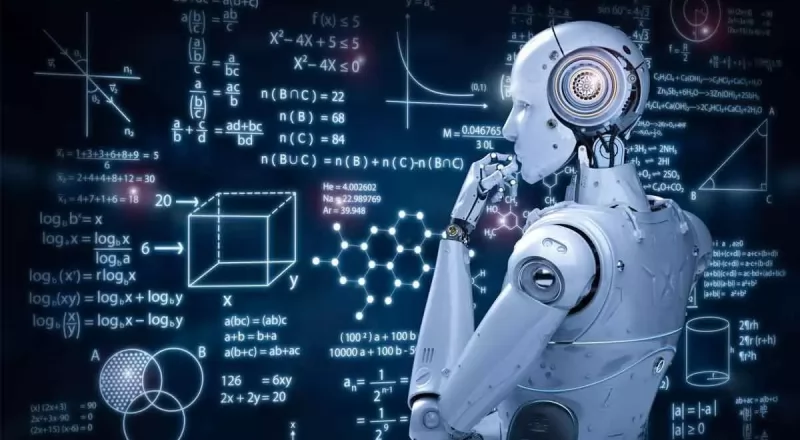While there’s debate on the definition of artificial intelligence (AI), it has, nonetheless, penetrated the job landscape, and this is of great interest to educators. Science, technology, engineering, and math (STEM) education fosters innovation, which fuels the economy, and questions are growing about the ability of AI to advance STEM education.
STEM problem formulation is now a highly laborious process that is difficult to scale. The reason for implementing AI in education is more crucial than ever and may be an attempt to address developmental issues in STEM education as artificial intelligence (AI) is increasingly being used in professional settings.
A major challenge in STEM is the limited number of problems, exercises, and tasks it can take for students to master a skill. Because of the manual effort required, education providers are forced to outsource experts. This typically comes at a high cost and requires large amounts of time to produce a sufficient amount of STEM problems that cover the varying levels, diverse teaching styles, and learning objectives.
As this research is done individually, another element educators need to be increasingly aware of is ensuring all problems are similar in quality, which can be difficult to manage due to human factors and error. AI eliminates human error and reduces the time required for repetitive tasks, giving teachers more time to focus on more creative and targeted content to better suit individual student needs.
TWO PRIMARY ELEMENTS OF AI-BASED LEARNING
Addressing the challenges of STEM, two primary elements of AI-based learning can enhance students’ and teachers’ curricula learning capabilities.
STEM PROBLEM DEVELOPMENT AUTOMATION
Deep neural networks and other machine learning techniques for natural language processing are used to automate the development of STEM problems (NLP). By using the original STEM problem as a template, NLP models can teach an AI-based system to find, analyze, and automatically create a similar problem.
In comparison to a human expert-based approach, this enables the creation of new, high-quality educational content (such as STEM problem sets for exams) more quickly, at scale, and at a lower cost.
When textbook tagging is automated, the process can be used to identify existing problems in textbooks or other source material and tie them to a learning objective associated with Bloom’s Taxonomy, which characterizes higher learning in six stages:
• knowledge
• comprehension
• application
• analysis
• synthesis
• evaluation
Adaptive learning
Adaptive learning often referred to as adaptive teaching, is a teaching strategy in which a machine learning algorithm adapts the learning material to each student’s goals, pace of learning, and aptitude.
The adaptive learning engine needs a selection of STEM challenges to choose from by matching those with students’ needs to tailor STEM content to a learner. As was already established, automated development can be used to solve a wide enough range of STEM challenges.
Educational providers can use customized and scalable content to meet the individual needs of students by utilizing adaptive learning and development automation. AI assists in reducing the manual time, money, and effort that traditionally rested on educators by including automated content. With self-paced, adaptive learning pathways accessible at a cheaper cost and higher quality, this move benefits both the educator and the student.
CHALLENGES TO STEM PROBLEM DEVELOPMENT AUTOMATION
However, technology and challenges go hand in hand. These are some challenges to STEM problem development automation we face today.
• Ingesting Content for Machine Training at Scale – Much STEM content exists, but it has been produced in human-readable rather than machine-sensible formats. Therefore, large-scale content ingestion may be time-consuming and resource-intensive.
• Obtaining High-Quality Content – Content publishers seek to protect their content from use, and public-domain content may be poorly curated or moderated, and therefore may be difficult to trust. The adage of “Garbage In, Garbage Out” holds, that training machines with poor content will lead to poor outcomes.
• Machine Training Time is Long and Costly – Training machines take substantial expert time and significant elapsed time. As time is money, this challenge is one of intellectual and financial resource availability.
• Creating a pedagogical taxonomy – Supervised training uses samples of various pedagogical content knowledge taxonomies. Over time, we will create a universal taxonomy that would cover the learning objectives of the major textbook publishers.
• Developing Appropriate Datasets – For each topic in the taxonomy, we need an associated dataset. This ensures that STEM problems in the dataset will match the parameters in the taxonomy topic.
• Achieving a High Accuracy Rate – A high accuracy rate in STEM problem generation saves both expert training time and the time that experts would need to create problems manually. High error rates consume valuable resources and waste time.
The demand for the implementation of digital tools in education has increased due to the pandemic.
Instead of concentrating on the monotonous processes of producing problem sets, educators may now offer creative and more targeted learning in response to the increased demand for higher skill sets. Better STEM learning outcomes for more kids are the end consequence.
All-inclusive
Open-source AI software that incorporates commercially available tools, and works with libraries and machine learning algorithms to increase server-side performance is one way that AI is rapidly becoming a community-driven initiative.
With these developments, educators and businesses dedicated to STEM education may employ automation to create high-quality content more rapidly, in larger quantities, and for less money—all of which are advantageous to the student.
——————————————————————————————————————————————————————–
Global Artificial Intelligence Summit & Awards
If you or your organization is building cutting-edge AI solutions to adapt to a world driven by technology, Please nominate yourself/or your company for GAISA AWARDS 2022.
Please follow the below-given link to nominate:https://gaisa.in/award
All further details regarding the event will be updated on the official website of Gaisa 2022. Please Visit: https://gaisa.in/

